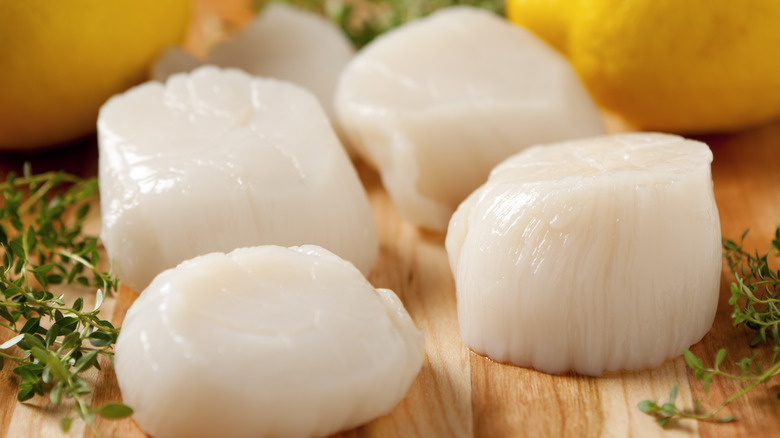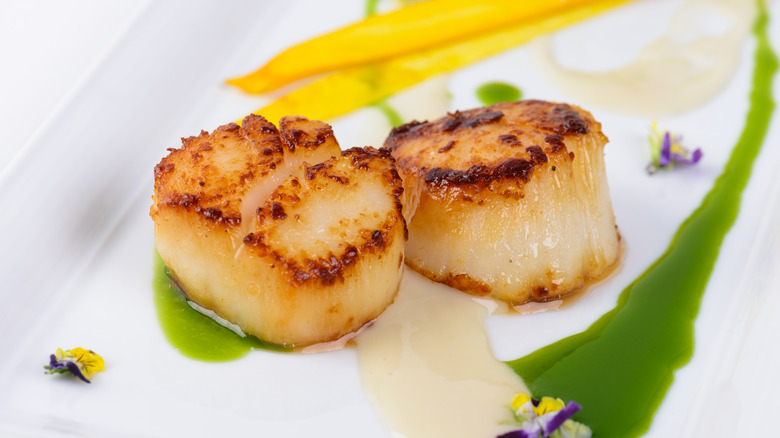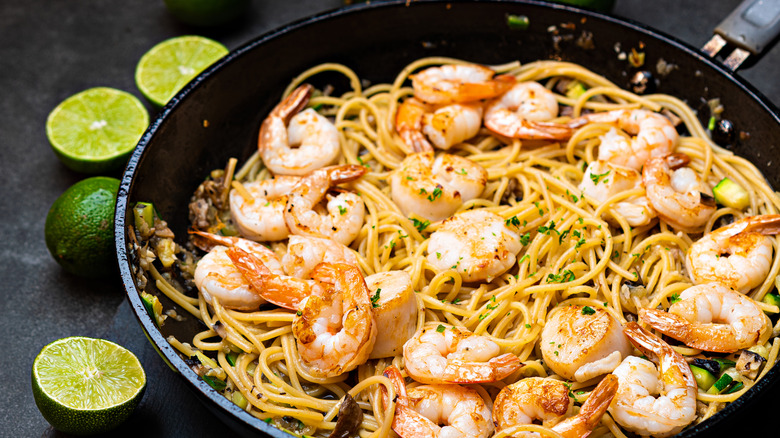Why Wet-Pack Scallops Are Never Worth Buying
Scallops are a delicacy that melts in your mouth if prepared right, whether you try to deep fry them, bake them, or pan-sear them with garlic and butter (make sure you find the best butter to use). However, not all scallops are created equal, and choosing the right kind will affect the quality of your meal. When buying the mollusk, you should pay attention to how they have been harvested and packaged – either wet-packed or dry-packed –as it affects the flavor of both.
Raw scallops generally have a notoriously short shelf life, and manufacturers often treat the mollusks with sodium tripolyphosphate (STPP) to make them last longer. These are called wet-packed scallops. However, this treatment causes them to retain excess water, which causes the shellfish to grow in size and weight. This is a strike against wet-packed scallops since you typically buy them by the pound. Likewise, STPP affects the quality, leading to a rubbery texture and a bad taste.
By law, manufacturers must list scallops as wet-packed if treated with STPP. Instead, you should consider buying dry-packed scallops, which haven't been treated, as they produce a better quality meal. Making the wrong choice could be the difference between a memorable or disappointing dinner.
Dry packed scallops are preferred
When it comes to wet-packed scallops, the added sodium in STPP causes them to take on additional water weight. In theory, you would think that the added treatment would make your scallops juicier. However, it has the opposite effect. These scallops end up shedding more moisture than dry-packed scallops. This additional moisture prevents the shellfish from browning in the pan, meaning you won't get that nice golden sear. Likewise, many report wet-packed scallops as having an unpleasant, soapy, or chemical taste.
Comparatively, dry-packed scallops are flash-frozen shortly after being caught to preserve them. However, if you have a local fish market or live near the coast, you may be able to find fresh scallops still in the shell. Whether frozen or fresh, dry-packed scallops will hold up better in the pan. You don't have to worry about them shrinking and leaking excess moisture, and they'll easily caramelize, giving a nice golden bronze exterior. Just toss them in a pan with some olive oil.
Not only do dry-packed scallops have a better texture, but they also taste better. These scallops have a slightly sweet, delicate taste, lacking the chemical flavor that plagues the wet-packed variety. However, if you must buy wet-packed scallops, there may be hope.
Use wet-packed scallops as a supporting ingredient
If dry-packed is off the table, you can still cook wet-packed scallops, but the quality won't be the same. You'll want to avoid pan-searing them because it usually ends tragically due to the excess moisture making the finished product a rubbery mess. Instead, consider incorporating wet-packed mollusks in a dish where you can use their moisture as an advantage. For instance, you can throw them in gumbo (which is different from jambalaya) or chowder, and your guests will probably never notice the difference.
Likewise, wet-packed scallops can be an ingredient in a seafood-inspired casserole or pasta (always finish cooking your pasta in a pan). Regarding the chemical taste leftover from the added STPP, you can try smothering them in a tasty sauce and tossing them in the oven. Add some breadcrumbs for texture, which will help remove any sliminess. Consider brining your wet-packed scallops as well. Toss the scallops in water, lemon juice, and salt for half an hour. This should significantly improve their taste.


